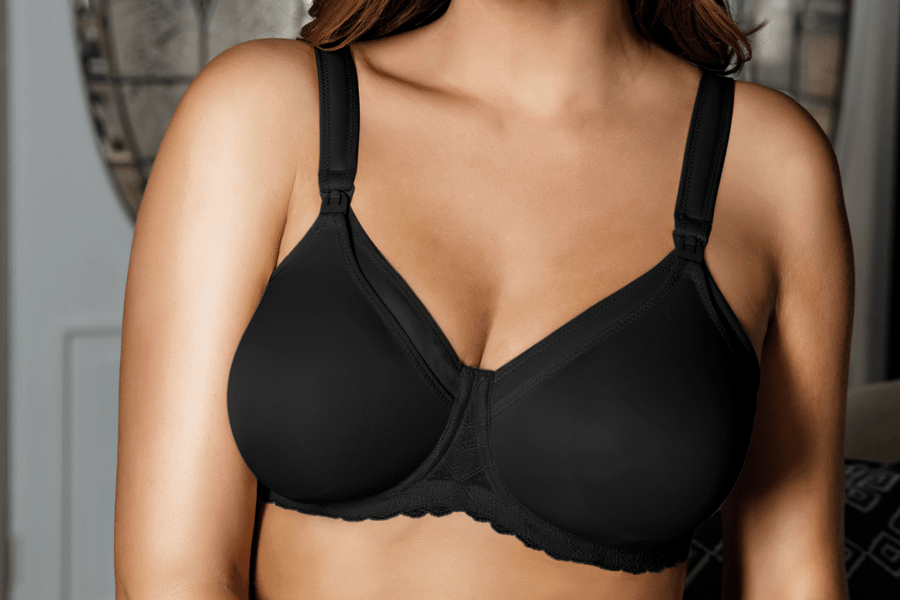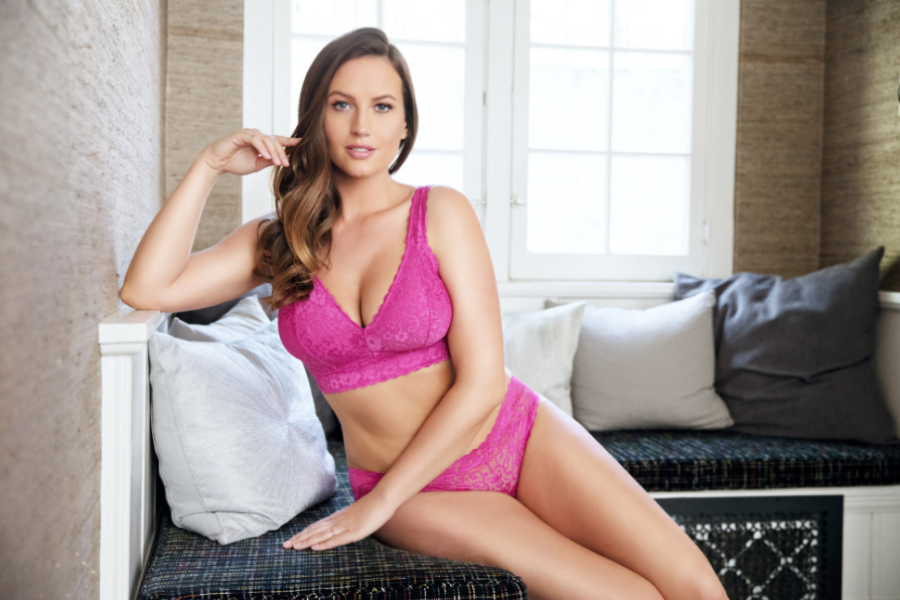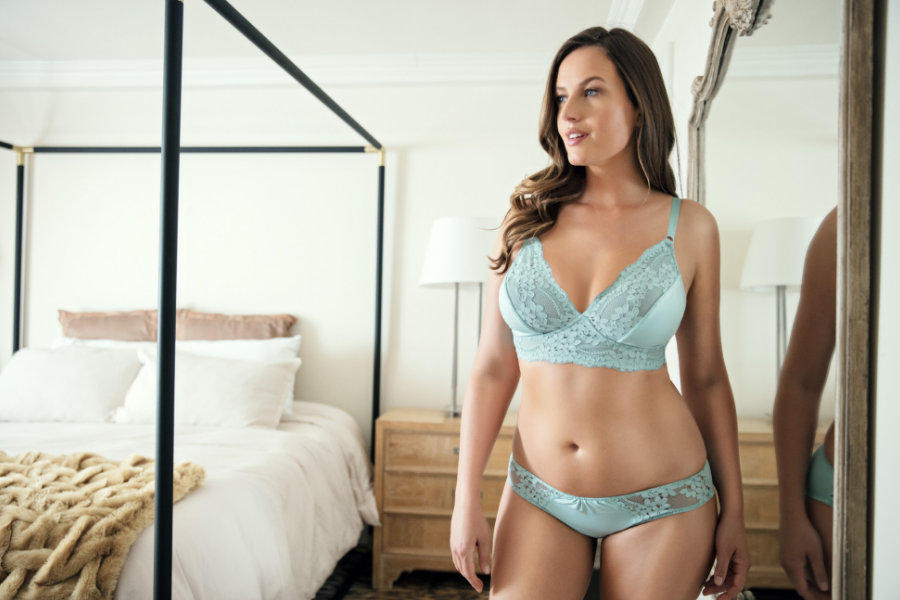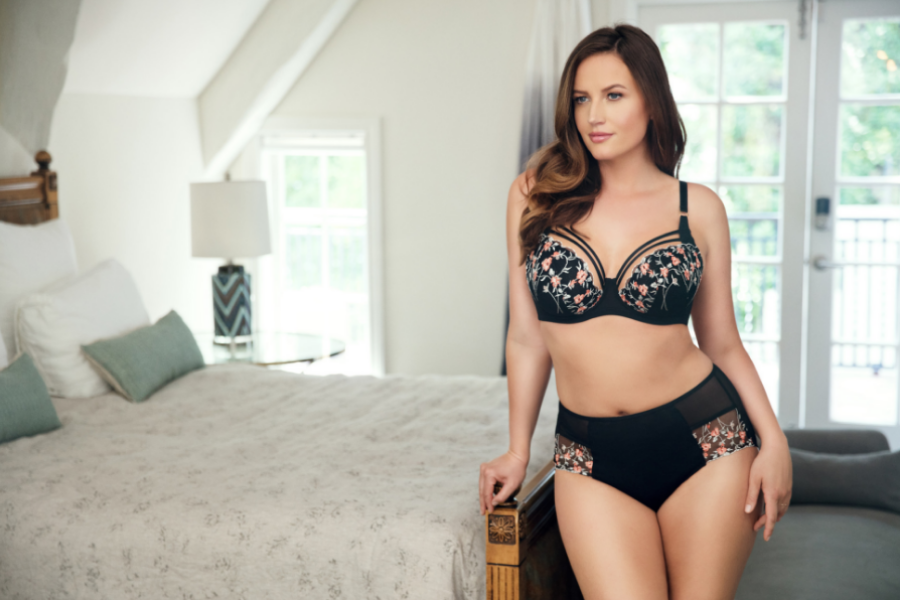Do I Have To Wear Nursing Bras While Breastfeeding?
There’s no doubt that ever since nursing bras were invented, mothers everywhere have been eternally grateful for their existence. These bras, which are specially designed to make breastfeeding more convenient, have a multitude of benefits.
But what if you don’t want to buy them? What if your budget doesn’t allow for this investment, or what if you simply would rather wear your regular bras? In other words, do you have to wear nursing bras while breastfeeding?
There’s also a lot to understand about these specialized undergarments. In this guide, we’ll explore what you need to know about nursing bras, as well as tackle this common question about whether you can forgo them or not.
Nursing bras have a lot of benefits
Nursing bras do have a number of advantages that are worth noting:
1. For one, they definitely come in handy when you need to breastfeed in public.
Most nursing bras feature cups that open so you can breastfeed without having to take your bra off — and some also have inner slings to keep the breast in place even while the cup is open. Then, you can easily clasp the cup closed when you’re finished nursing.
Some nursing bras even have one-handed hooks that make opening and closing the cups while you’re holding your infant super simple. And some come with markers that help you to remember which breast you performed your last feeding with.
2. They help conceal leakage.
Leakage is a common problem while you’re breastfeeding — and nursing bras can help to conceal leaks to prevent any embarrassing scenarios.
The pads inside nursing bras offer extra coverage so that you don’t have to deal with pesky wet marks showing through on your top. Plus, you won’t have to worry about scrubbing away stains from those leaks later on.
3. They’re comfortable.
Nursing bras are typically constructed with super soft fabrics, padded straps, and other features for maximum comfort. And comfort is obviously key while you’re nursing, because your breasts may be a tad swollen or tender, and your nipples may be extra sensitive.
4. They provide support and comfort as your breasts change.
Also, nursing bras are designed to adjust to all of the inevitable changes your breasts will go through during the breastfeeding process. Your breasts will swell when the milk comes in, and eventually, shrink back down as the milk supply dries up. That means your size will change — anywhere from a half cup to two cups.
Regular bras aren’t really designed to accommodate for these changes, but most nursing bras can stretch and conform to your breasts throughout these shifts.
It’s also worth noting that there are so many different kinds of nursing bras to choose from, so regardless of your breast shape and style preferences, you’re bound to find one that works for you.
Related: How To Buy The Right Nursing Bra Size
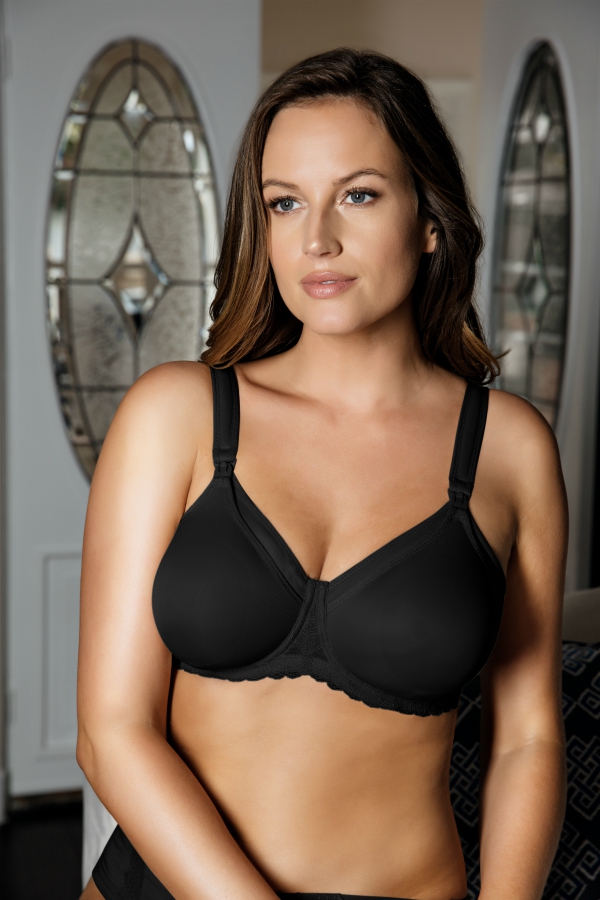
Leila Nursing Bra NB502 in Black
But you may choose not to wear one.
Obviously, nursing bras come with a plethora of perks. That said, they are not necessarily required. Some women prefer to wear regular bras, and that’s totally OK.
Here are a few factors to consider when choosing which bras to wear while you’re breastfeeding:
1. Look for bras with adjustable straps.
First of all, you’ll definitely want to look for bras that have adjustable straps as well as an adjustable band. Again, your breast size may change in the coming weeks, and you need to be able to loosen and tighten the bra as needed.
Also, you should make sure that your nursing bras fit comfortably on the loosest band setting so you can tighten the band accordingly as your breasts gradually shrink down during the weaning process.
2. Close a bra with a nursing hook that opens easily.
A traditional bra doesn’t have cups that open, but you can still find styles that make nursing in public a tad easier.
For example, a bra with nursing hooks may make breastfeeding more convenient, as you can open it up with one hand to release your breast and then instantly close it back up again once the feeding is done.
Also, bras made with super stretchy materials tend to be easier to pull down or to the side to reveal the nipple.
3. Consider buying nursing pads.
In regards to leakage, you can buy nursing pads to slip inside your breast cups. Nursing pads are worn against the nipple and can absorb excess milk so that it doesn’t show through or stain your shirt.
You can find disposable or washable nursing pads, depending on your preferences. Just be sure that they fit comfortably within your bra — they need to be large enough to cover the majority of your breast.
Contoured nursing pads are ideal, as they will conform to your breast without bunching up, looking bulk, or shifting around the way a flat pad might.
For comfort purposes, it’s also important to look for nursing pads made with an outer layer of moisture-wicking material, as they’ll feel dry against your skin even when they become saturated due to a leak. The more absorbent they are, the better.
4. Decide if you want a wireless nursing bra or one with underwire.
But what about underwire? Many women wonder whether it’s OK to wear underwire bras while they’re breastfeeding, and the consensus is that there’s no evidence it can be harmful whatsoever. That said, lactation consultant Attie Sandink told Today’s Parent that it’s best to wait about six weeks after giving birth to wear an underwire bra — this allows your body to have “find its rhythm” where milk production is concerned. Be sure to check with your doctor first before switching to an underwire bra.
Also, Breastfeeding USA recommends making sure that the underwire isn’t digging into or pressing your breasts in any way, as this can impede circulation and lead to plugged ducts. Remember: An underwire bra should be just as comfortable as a wire-free bra.
Final considerations
Clearly, nursing bras have a multitude of advantages — but that doesn’t mean you have to wear them while you’re breastfeeding. Choosing bras to wear while nursing is a very personal choice. You may prefer to seek out bras with stretchy cups and a front closure, and incorporate nursing pads for extra coverage.
Regardless of whether you opt for nursing bras or not, make sure to get professionally fitted — either eight months into your pregnancy or several weeks after you give birth, as this is when your breast size will stabilize somewhat.
Your breast size will likely change as a result of pregnancy and milk production, and it’s crucial to get an accurate read on your new size to ensure that whatever bras you wear while nursing provide sufficient support.
Related: How Should A Nursing Bra Fit?

Leila Nursing Bra NB502 in Black
We Highly Recommend
Whether you’re shopping for new everyday bras or lingerie for a special occasion, it’s always a good idea to seek out a second opinion. We know how hard it is to find bras that fit well and feel good, especially when you’re doing it on your own. If you’ve ever felt unsure about your bra size or you just don’t know where to go to find good bras, it’s time to let a bra fitter help.
Many specialty lingerie boutiques offer bra fittings. Their expert bra fitters will take the pain and frustration out of bra shopping and do all the work for you. Even better, their product knowledge can save you time and money. Plus, they know where all of the best bras are hiding.
If you’ve struggled with finding bras in the right size, it’s time to make a change. Visit our specialty store locator to find a store near you and schedule an appointment.
Happy bra shopping!

